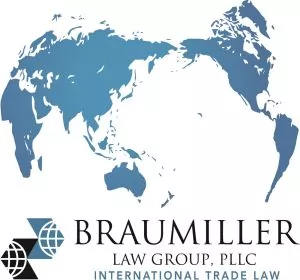- within International Law topic(s)
- within Energy and Natural Resources, Corporate/Commercial Law and Technology topic(s)
- in European Union
- with readers working within the Retail & Leisure industries
China owns outright or has majority control in 17 overseas ports globally, according to recent estimates. However, its broader footprint is much larger with 129 port projects worldwide that involve Chinese investment, construction, or operational control. 115 of these are active, spanning every continent except Antarctica, which is next. Once you finish this one, see my previous article on the subject ( https://www.braumillerlaw.com/coming-soon-a-new-polar-icebreaker-competition-in-the-arctic-region-for-trade-route-supremacy).
These ports include full ownership, majority stakes, and long-term operational leases often through state-owned enterprises like COSCO. COSCO is the acronym for China Ocean Shipping Company and is one of the largest shipping and logistics conglomerates in the world. They operate over 1,300 vessels, including container ships, bulk carriers, oil tankers, and serve over 160 countries and ports worldwide. One of their four subsidiaries is COSCO Shipping Ports, which includes direct port investment.
A few examples of their investments include, but are not limited to, majority-owned ports like Piraeus, Greece where COSCO owns a majority stake and operates the port, Chancay, Peru where COSCO has a 60% stake with exclusive use rights for 60 years. This is a massive port which I mentioned in a recent podcast with production to be completed by 2030. Also worth a mention, Djibouti, East Africa where Chinese firms hold a 23.5% stake, with strategic military relevance and Haifa, Israel and Zeebrugge, Belgium – part of China's Belt and Road "dragon's head" in Europe.
China's strategy blends economic leverage with geopolitical positioning, often targeting key chokepoints and trade corridors. Their global port investments are reshaping trade flows, tariff dynamics, and geopolitical leverage in ways that ripple across supply chains and national economies. Chinese-owned or operated ports streamline logistics for Chinese exports and imports, creating more predictable and efficient routes: They have diversified their routing where they can now bypass chokepoints or politically sensitive regions by using friendly ports in Africa, Latin America, and Southeast Asia. In addition to this ever-growing Chinese dominance, the U.S., tariffs and vessel fees have pushed cargo away from West Coast ports like Oakland, Long Beach and Los Angeles (down 83% and 71% respectively). China is investing in what some might call supply chain control, which is imperative when it comes to potential geopolitical roadblocks. Ownership allows China to influence port scheduling, container prioritization, and infrastructure upgrades, giving it leverage over global logistics. Of course, ports themselves don't set tariffs, but they influence how and where tariffs become a problem. The U.S. now imposes steep fees on Chinese-built or operated vessels of up to $140 per net ton by 2028. This raises costs for shippers and forces companies to reroute or reflag vessels. The port fees on Chinese-owned, operated, or built vessels will be in effect starting on October 14, 2025, as part of a broader strategy to counter China's maritime dominance and revive U.S. shipbuilding. How this will revive US ship building is beyond this author. Speaking of shipbuilding, in July 2025, South Korea pledged $150 billion toward U.S. shipbuilding. As a thank you, in September, ICE raided Hyundai's EV battery plant, a $7.6 billion joint venture with LG Energy Solution, and handcuffed and shackled 300 employees, and then imprisoned them in a detention center for a week before sending them back to S. Korea. An absolute head-scratcher from a geopolitical perspective especially when it comes to a purely transactional approach by the U.S. in all matters. So, here are the fees that will be imposed to bring back US shipbuilding, he wrote with a grin.
1. Chinese-Owned or Operated Vessels
- 2025: $50 per net ton
- 2026: $80 per net ton
- 2027: $110 per net ton
- 2028: $140 per net ton
Charged up to five times per year per vessel.
2. Chinese-Built Vessels (even if foreign-operated)
- 2025: $18 per net ton or $120 per container (whichever is higher)
- 2026: $23 per net ton or $153 per container
- 2027: $28 per net ton or $195 per container
- 2028: $33 per net ton or $250 per container.
3. Foreign-Built Vehicle Carriers (Ro-Ro ships)
- Flat fee of $150 per Car-Equivalent Unit (CEU) at first U.S. port of call.
So, shipbuilding dominance and subsequent port fees aside, what is the U.S. doing to counter the Chinese expansion? Well, unlike China's expansive global port investments, the United States does not own or operate any major ports abroad. The U.S. has therefore tightened scrutiny on foreign ownership of critical infrastructure, especially ports, under CFIUS (Committee on Foreign Investment in the United States). The U.S., while dominant in naval power, (by experience and not size) is reactive and not very proactive in port infrastructure. So, it's now pushing for Western firms to buy back Chinese stakes and reduce reliance on Chinese cranes and shipping routes.
In conclusion, and basic observation, China has built a global logistics web through port ownership, equipment supply, and strategic investments. It's not just about trade, it's about influence, access, and crisis management. Take for example the recent trade block caused when Russian drones invaded Polish air space. Poland immediately shut down the Belarus–Poland border, specifically the Małaszewicze–Brest rail junction, which has been a critical artery for China–Europe trade. Trade volume through this corridor in 2024 was $29 billion worth of goods. It means a lot to China being responsible for 90% of all China–EU rail freight, making it the dominant land route. Traffic on the roads leading to the border crossing is backed up for miles and has been for days. It's insane but shows how one's international business flow can be vulnerable to geopolitical maneuvers, even when your said country is not directly involved. (Well, China is indirectly in this case though via supporting Russia's war efforts) Come to think of it, a direct so-called maneuver that would also be a major block in a trade route would be a China invasion of Taiwan, via the Taiwan strait getting militarily locked down. From a financial perspective, that would be a huge blow to China as well economically as $2.5 trillion in trade passes through the Taiwan strait annually representing 20% of global maritime business. The stakes are high right now, global trade is volatile, and therefore it's all about strategy, securing routes, building ports, buying into ports, and avoiding the bottlenecks that are a result of the inevitable global clashes, and China is in the lead, by far
Check out our new Digital Magazine Get the inside scoop on the Braumiller Law Group & Braumiller Consulting Group "peeps." Expertise in International Trade Compliance.
The content of this article is intended to provide a general guide to the subject matter. Specialist advice should be sought about your specific circumstances.


